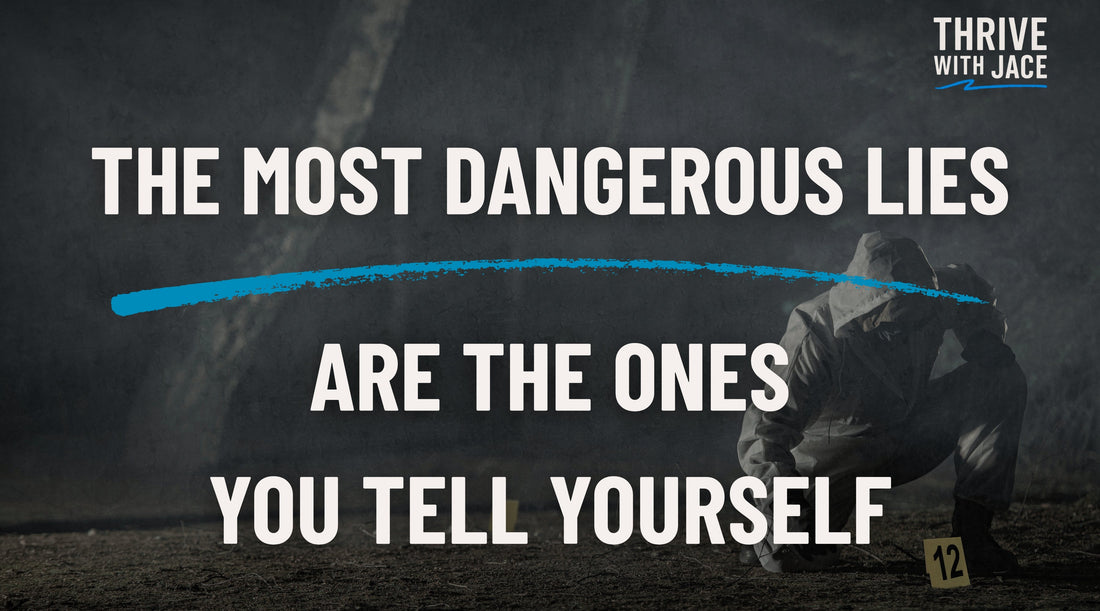
The Most Dangerous Lies Are the Ones You Tell Yourself
Share
We all lie.
Not to hurt people. But to stay comfortable.
To avoid facing the hard stuff. To protect the stories we’ve built about ourselves.
But the most dangerous lies aren’t the ones we tell others.
They’re the ones we quietly whisper to ourselves in the dark.
The ones that sound almost true.
The ones that keep us stuck exactly where we are.
The Lies I Used to Tell
I used to tell myself things like:
“I don’t have time.”
“I’m just not that kind of person.”
“They’re just better at it than me.”
“It’s not the right time.”
“I’ve already messed it up, so what’s the point?”
Each one felt small. Just a passing thought.
But together? They formed a wall.
And I lived behind it for years.
Those lies gave me just enough comfort to avoid changing.
But not enough power to move forward.
They gave me a story. But no freedom.
Self-Lies Feel Safe
You’re not lying because you’re weak.
You’re lying because your brain is trying to protect you.
Change feels threatening. So your mind says:
“It’s not the right time.”
“You’re too old.”
“You’re too far behind.”
“Let’s not rock the boat.”
And because those lies sound logical, even caring, you believe them.
You nod. You delay. You keep your head down.
But deep down, you know.
You’re not overwhelmed. You’re avoiding.
You’re not confused. You’re scared.
You’re not too busy. You’re just filling your time so you don’t have to confront the truth.
And the longer you tell yourself those stories, the harder they are to untangle.
How Bias Plays Its Part
Your brain is wired to protect the status quo.
Ever heard of confirmation bias?
That’s your mind seeking proof that your current beliefs are right, even if those beliefs are nonsense.
So if you believe, “I always mess things up,” your brain will ignore the times you didn’t, and spotlight the one time you did.
If you believe, “I can’t lead,” you’ll downplay your influence and exaggerate your mistakes.
That’s not logic. That’s bias.
And until you see it, it runs the show.
The Wake-Up Call I Didn’t Want
There was a point where I’d convinced myself I was just coasting.
Taking time. Being measured. Planning things properly.
In reality, I was hiding.
Wasting time. Avoiding decisions. Lying to myself about how much longer I could go on like that.
I didn’t realise it until someone I respected said,
“You’re playing small. And you know it.”
It stung. But they were right.
From that moment, I started paying attention to every quiet excuse I made.
And I started challenging them. Out loud.
How to Break the Pattern
1. Catch the Story in Real Time
The first step is awareness.
When you catch yourself saying something that feels like a justification, pause.
Ask:
Is that true?
Is it really true?
What’s the cost of believing it?
If your answer makes you feel small, powerless or boxed in, it’s probably not the truth.
2. Ask, “What Am I Avoiding?”
Most self-lies are masks for fear.
Fear of failing. Fear of looking stupid. Fear of succeeding and having to keep it up.
Dig underneath the lie. There’s always something real there, and naming it gives you your power back.
3. Replace It With One Honest Truth
Not toxic positivity. Just something grounded.
Instead of:
“I’ve left it too late.”
Say:
“I’ve started later than others, but I’m starting now.”
Instead of:
“I don’t have time.”
Say:
“I haven’t prioritised it. Yet.”
Honest language creates movement.
Lies create paralysis.
4. Get Brutally Clear on Your Values
Your values cut through the noise.
If honesty, growth and responsibility are part of who you want to be, then living behind lies doesn’t line up.
This is why I talk about integrity so much. Not in a moralistic way. In a practical way.
When you’re out of integrity with yourself, you burn out faster. You disconnect. You lose confidence.
Getting aligned again doesn’t require perfection. It requires truth.
This Isn’t About Beating Yourself Up
You don’t need to feel guilty for lying to yourself. We all do it.
This is about learning to spot it sooner.
Cut through it faster.
And get back to clarity.
The people who thrive in chaos aren’t the ones who never lie to themselves.
They’re the ones who stop believing those lies as soon as they catch them.
That’s real resilience.
Not pretending you’ve got it all figured out, but being honest enough to course-correct when you don’t.
What Lies Are You Still Believing?
Be honest. Right now. No one’s watching but you.
Where are you blaming time instead of owning your choices?
Where are you playing down your ability because it’s easier than risking failure?
What quiet lie has shaped the last month of your life?
You don’t need a full reinvention today.
You just need to stop feeding the story that’s keeping you stuck.
Pick one lie. Drop it.
And replace it with a truth that moves you forward.
If You’re Ready for Real Honesty…
Here’s where I’d start:
✅ The 3-Day Resilience Reset
It strips back all the noise and gets you honest, fast. Not in a fluffy way. In a clear, confronting, helpful way.
📖 Grab the free 30-page preview of Thrive in Chaos
This book is full of uncomfortable truths, the kind that set you free. The preview alone will challenge how you think about control, fear, and responsibility.
🧠 Download the Resilience Rapid Response Kit
Use the values worksheet to reconnect with your truth. Use the mindset prompts to cut through your own excuses. This stuff works because it’s real.
Final Word
You don’t need to become a new person.
You just need to stop lying to the one you already are.
The truth might be uncomfortable.
But it’s also powerful.
And once you get hold of it, everything shifts.
